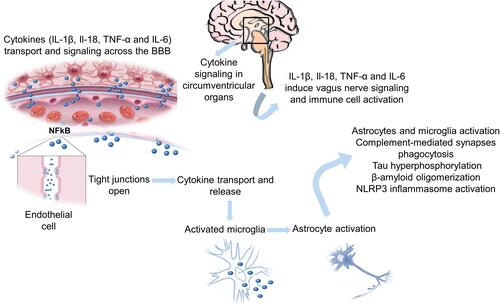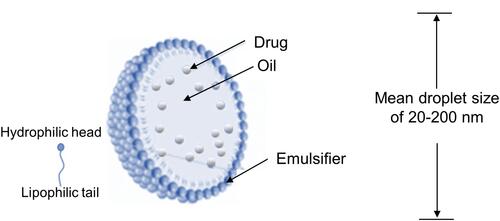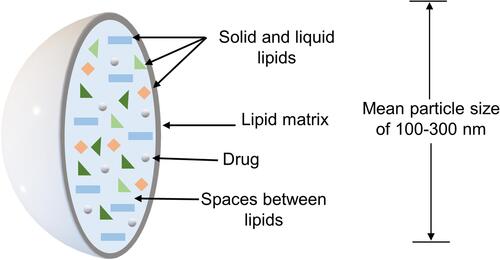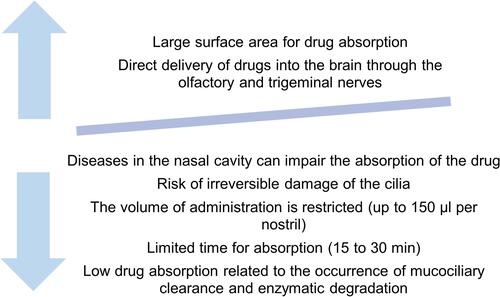Figures & data
Figure 1 Schematic representation of the systemic process of inflammation in AD neuroinflammation.

Figure 3 Schematic representation of nasal cavity structure and the mechanisms of drug transport through the nasal mucosa to the brain. (A) Direct pathway: direct drug delivery through the olfactory and trigeminal nerves. (B) Indirect pathway: indirect drug delivery through the countercurrent exchange mechanism in the systemic circulation.

Figure 4 Schematic representation of the main characteristics of oil-in-water (O/W) nanoemulsions.

Figure 5 Schematic representation of the main characteristics of nanostructured lipid carriers (NLC).

Table 1 Most Relevant Therapeutic Effects of Formulations Containing Nanoemulsions and Nanostructured Lipid Carriers (NLC) for Nose-to-Brain Delivery in the Treatment of Alzheimer’s Disease (AD)

